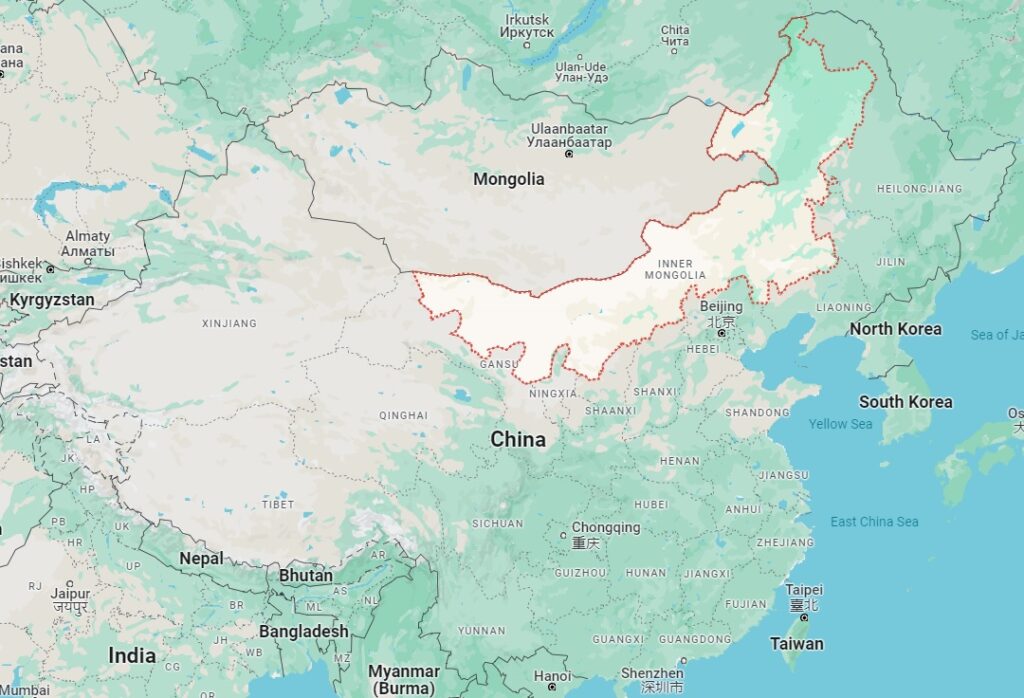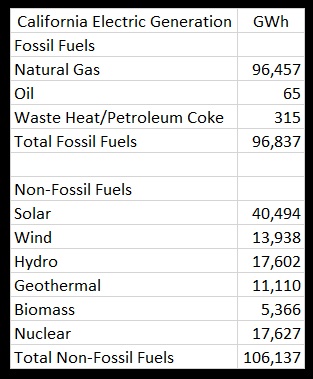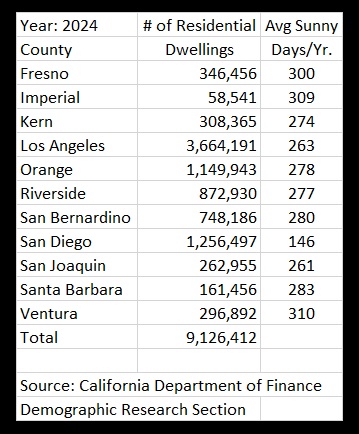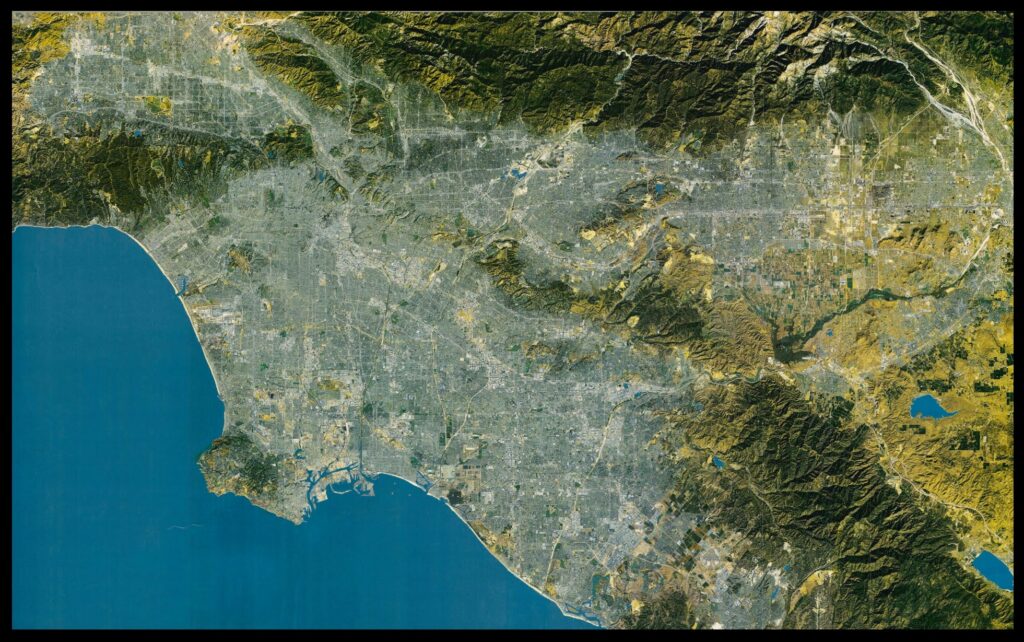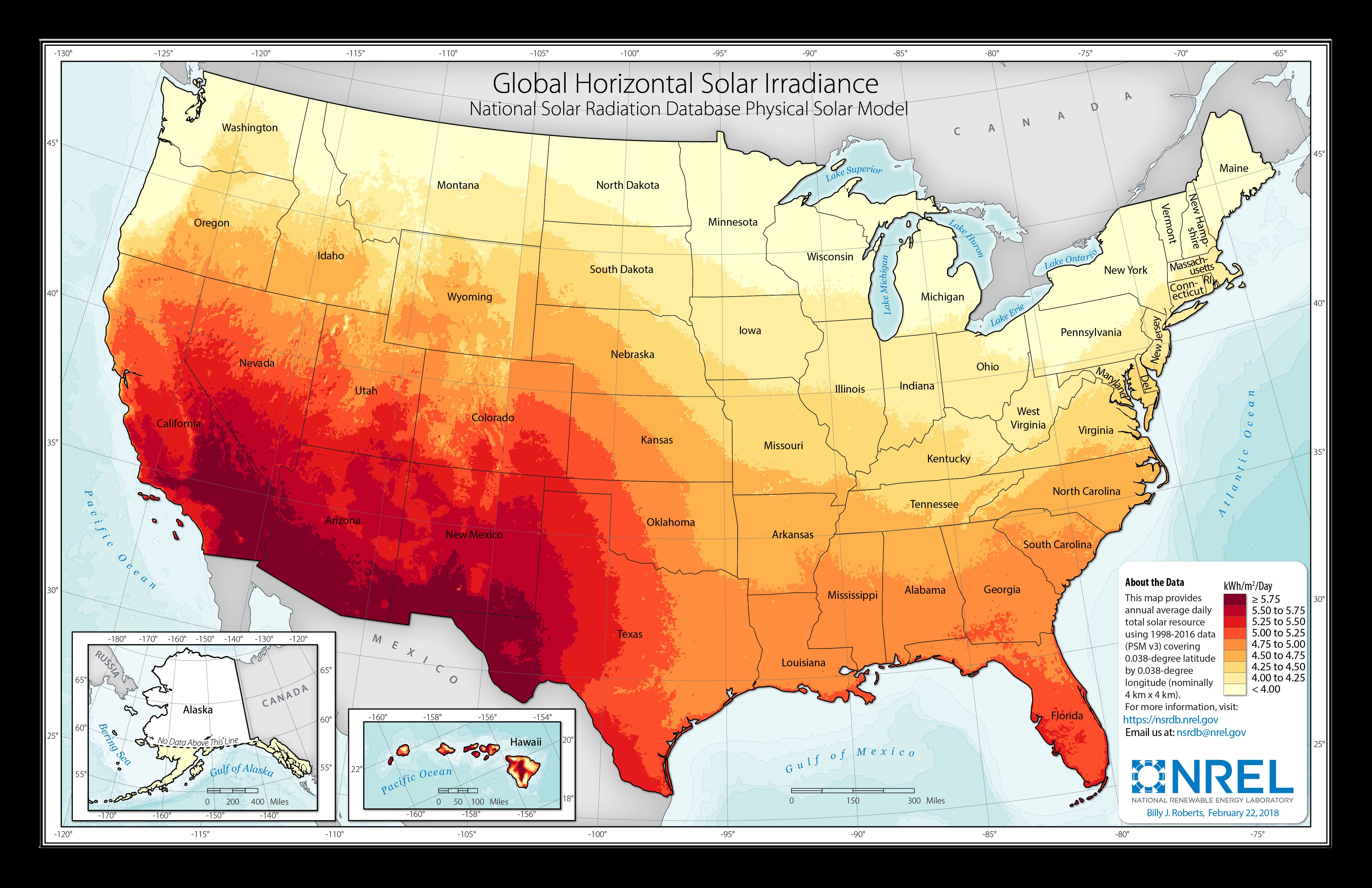There are several good reasons for selecting the Golden State. Unlike China, which lacks an ocean west of and adjacent to the Gobi Desert, California’s southern shore is a stone’s throw away from its own sparsely populated sun-drenched desert. In addition, the state features towering mountains, a vast southern metropolitan area with innumerable individual residential rooftops, and Death Valley, the lowest depression in North America, about 4.5 hours northeast of Los Angeles, 2.5 hours northwest of Las Vegas, and about 200 miles (321.9 km) as the crow flies from the ocean.
Death Valley Statistics
The stated depth of the Death Valley canal is based on this topographic map, which suggests an estimated average altitude at 2,500 feet (762 meters) along its possible 425 km route. The staggering volume of earth that would need to be excavated can be calculated by the formula Volume = length * width * depth. That works out to 74,154,000,000 cubic meters, or 74.154 km3. These dimensions assume the canal would be perfectly rectangular. In practice, the actual excavated volume would likely be significantly larger due to slope of the sides and other factors, but the numbers illustrate the magnitude of the project. Essentially, it’s a trench roughly equivalent to 10 times the volume of Mount Everest and about half as deep as the Grand Canyon. While the Colorado River formed the latter over approximately 35 million years, modern equipment could strive to complete the project in 12 years, the same time frame as China’s Three Gorges Dam and the $2 billion Teen-Tom Waterway. Death Valley would exceed both by many orders of magnitude. Teen-Tom required 100-million dump truck loads to move 229.3 million cubic meters of excavated earth. Extrapolating, Death Valley would require about 32.36 billion dump truck loads (7,388 per day, or about 308 per hour every 24 hours) and cost about $53.9 billion per year, or $647.2 billion over 12 years. However, this simplified calculation doesn’t include additional potential costs due to natural and bureaucratic barriers.
Cost of Pumping Water in California
The cost to pump water over vast distances is enormous. For example, California’s State Water Project relies on a series of pump stations to carry water from the Sacramento-San Joaquin Delta to the southern part of the state. The most powerful, Edmonston Plant, requires 14 gigantic pumps with a combined draw of over 7,460 megawatts to lift the water 587 meters uphill to a series of tunnels over the Tehachapi Mountains. The state’s other major source of water, the 389.5-kilometer-long Colorado River Aqueduct, also draws an enormous amount of electricity. Imported river water requires approximately 14,000 kilowatt-hours per million gallons, 1,000 less than a comparable volume of desalinized water.
The State is planning to build as many as 17 desalination plants. Claude Lewis Carlsbad Desalination Plant has been in operation in San Diego County since late 2015. It is the largest in the Western Hemisphere, producing 50 million gallons of water a day. Another in Huntington Beach of similar capacity is in late-stage development. Together these plants are going to draw an estimated 1,500,000 kilowatt-hours, or 1,500 megawatt-hours. Accordingly, if and when the State builds all the plants, their combined draw will be 12,750 megawatt-hours.
